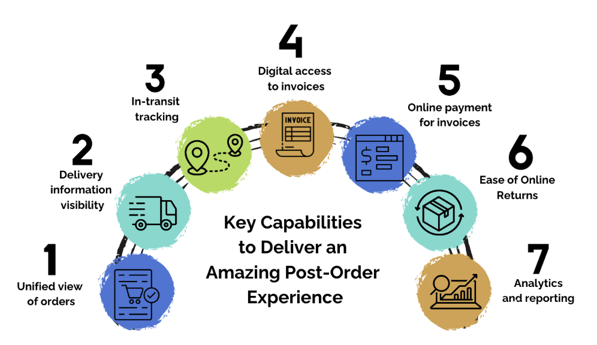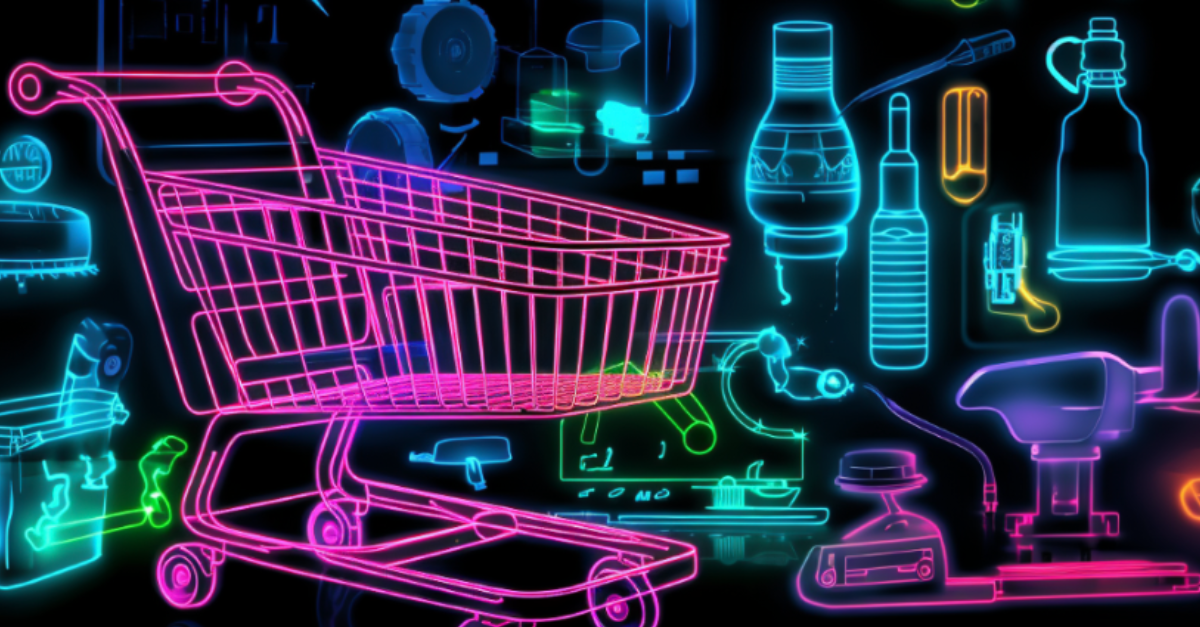Millennial and Gen Z buyers push higher expectations for B2B Sellers
Millennial and Gen Z professionals now constitute 64% of business buyers according to a new report from Forrester Research Inc. As this...
5 min read
Barathan Sivabalan : Oct 12, 2023 8:52:54 AM
In the ever-evolving business landscape, the combined force of Millennials and Gen Z commands a staggering 64% of business buyers. Their influence is undeniable, as the digital realm undergoes a monumental transformation. These discerning buyers have been nurtured by the exceptional user experiences that B2C platforms offer. As a result, the bar for customer expectations has been raised significantly for B2B companies, compelling them to upgrade their eCommerce solutions and deliver nothing short of extraordinary customer experiences.
Beyond the initial transaction lies a pivotal phase, one that holds the key to delivering an exceptional customer journey for B2B customers. This article delves into seven critical capabilities necessary for crafting a remarkable post-order experience in the realm of B2B Ecommerce.

B2B customers use different digital channels in their purchase journey. They are unique in the way they transact, with diverse touch points such as physical brick and mortar locations, digital channels like an eCommerce site, EDI, punchout, mobile app, inventory management solution, or through traditional personalized sales reps. With many purchasing channels in play, B2B customers expect a cohesive omnichannel experience. Whatever the touchpoint may be, it’s important to offer a unified, round-the-clock, Omnichannel, digital capability to access product purchases across all touch points and across all platforms. Mobile Apps play a vital role by driving or influencing an average of over 40% of revenue in leading B2B organizations, according to a study by The Boston Consulting Group. Mobile apps offer a unified view of orders by providing real time access to data. This leads to an increase in customer satisfaction.
B2B customers emphasize delivery information and have a strong urge to access it easily to manage business operations. A contractor with a job on hand can align customer demand and plan warehouse activities like freeing up bin space or deploying additional staff based on delivery information. According to Digital Commerce 360, delivery & tracking ranks among the top customer experience challenges in the online B2B buying process. During their shopping experience, customers need to be offered available information about when products will be delivered.
Due to supply-demand oscillation, inventory may not exist during the shopping experience, thus resulting in back-ordered products. This leaves a bit of uncertainty to customers. To add complexity, there are a lot of factors that impact the supply chain in day-to-day operations which can impact product delivery. It is important to communicate updated delivery information and fulfillment information, so customers can adjust their plan based on the latest information available. According to research, 69.7% of shoppers said they’d be less likely to shop with an enterprise that fails to inform customers of delays or issues and 12.5% would never shop with that enterprise again.
Customer expectations for real-time, in-transit tracking have never been higher, thanks to digital advancements in the supply chain. As per a study conducted with Customer Experience and Supply Chain professionals, 84% want to improve in-transit shipment visibility. One of our customers provides the exact truck location, so manufacturers can free up warehouse space and machines to work with the new raw material being shipped in.
Influenced by B2C experiences, B2B customers have set expectations, thereby making in-transit tracking an important feature. B2B eCommerce sites need to integrate with advanced tracking solutions and 3rd party APIs to provide real-time updates regarding the status of shipment and expected delivery. Based on a report by Sapio Research, the top criterion when choosing a new supplier is online order tracking. It is important to communicate both good and bad news, so customers can experience certainty and plan accordingly.
“Where Is My Order” (WISMO) is one of the key challenges faced by enterprises. As per a study conducted with Customer Experience and Supply Chain professionals, 48% would like to reduce WISMO calls. On average, each WISMO call costs a company $5 to resolve. Automation helps to improve customer experience and reduce contact center calls.
Digital touchpoints are taking over B2B interactions, and the majority of B2B customers prefer accessing invoice details online. B2B customers carry great prominence on the value presented by eCommerce sites. 64% of buyers place more importance on experience than price, and 86% of buyers are willing to pay more for a better experience. One hidden gem that would provide immense value to B2B customers is accessibility to invoices via eCommerce. Over the years, B2B eCommerce sites have ignored integrating invoices. With B2B customers embracing digital capabilities, the ability to view invoices for sales orders or return orders as a PDF or provide the ability to download or email them in PDF delivers a differentiating experience and unlocks huge value for B2B customers. This capability lays the foundation for more advanced digital capabilities, such as paying invoices online through ACH/Credit Card, customizing invoices based on needs, accessing Proof of Delivery/ Bill of Lading and digitizing returns via eCommerce.
B2B eCommerce sites need to offer the ability for users to pay invoices through ACH, Wire Transfers, and Credit Cards. Based on the study by Sana Commerce, one of the top 5 criteria when choosing a new supplier is the ability to pay online. Traditionally, payment by check has been the most popular B2B payment method, however, electronic payments (ACH, Wire Transfers, Credit Card) are catching up in B2B transactions even though they are still in an embryonic stage. Check usage has fallen to an unprecedented low of 42% in 2019 from 81% in 2004 and therefore, it is just a matter of time before electronic payment methods start dominating B2B transactions. Businesses that offer customers multiple ways to pay invoices have the potential to increase revenue by as much as 30%.
Time is of the essence and B2B customers expect ease in returning products. It is important to offer customers a self-serve option to initiate returns. Customers expect to be able to create return labels through the eCommerce site. Then, they can drop off their returns at a third-party designated return zone rather than wait in line at a store to return products.
Returns in the B2B world are complicated and tricky, due to the inherent nature in which business transactions are conducted. It is crucial to integrate returns into an eCommerce site via purchase history so customers have digital access to returns and can track the status of returns and refunds.
Analytics and reporting create exceptional value for large and medium-sized customers who have unique fiscal commitments. 41% of B2B buyers say self-service functionality would make it easier to do business online. Customers can leverage reporting capabilities on an eCommerce site to compare invoices and payment transactions across a time range to solve reconciliation challenges. They can also leverage analytics and reporting to view spending across product categories and across the entire organization.
Another key expectation from B2B customers is real-time insights into purchasing spending patterns. Customers expect analytic capabilities with access to pre-defined reports and/or custom reports to gain real-time insights on purchasing patterns. For instance, a manufacturer could use analytics and reporting to gain insights on purchases to a Ship To and understand buying patterns to find ways to consolidate orders. By tracking past purchases, businesses can uncover opportunities to optimize purchasing spends through vendor consolidation or volume-based purchasing.
Delivering an amazing post-order experience in B2B eCommerce requires a multi-faceted approach, with each facet acting as a building block to providing a robust, end-to-end, post-order solution. The most robust solutions offer a self-service model. This enables the B2B customer to complete business transactions within timelines that best suit their business needs.
As a recap, customers expect a unified view of orders, delivery information at their fingertips, in-transit tracking, digital access to invoices, ability to pay invoices online, online returns, and analytics and reporting.
To learn more about how AAXIS can assist you in your post-order experience journey, schedule an appointment today!
Barathan Sivabalan is a Technical Project Manager at AAXIS Digital and a B2B eCommerce Enthusiast.
.png)
Millennial and Gen Z professionals now constitute 64% of business buyers according to a new report from Forrester Research Inc. As this...

At AAXIS, our primary focus is on developing eCommerce solutions. While we are new to the Salesforce Partner Ecosystem, we have more than 20 years of...

Today's B2B customers prefer platform self-service over speaking to a sales rep on the phone. And honestly, who can blame them? It's akin to wanting...